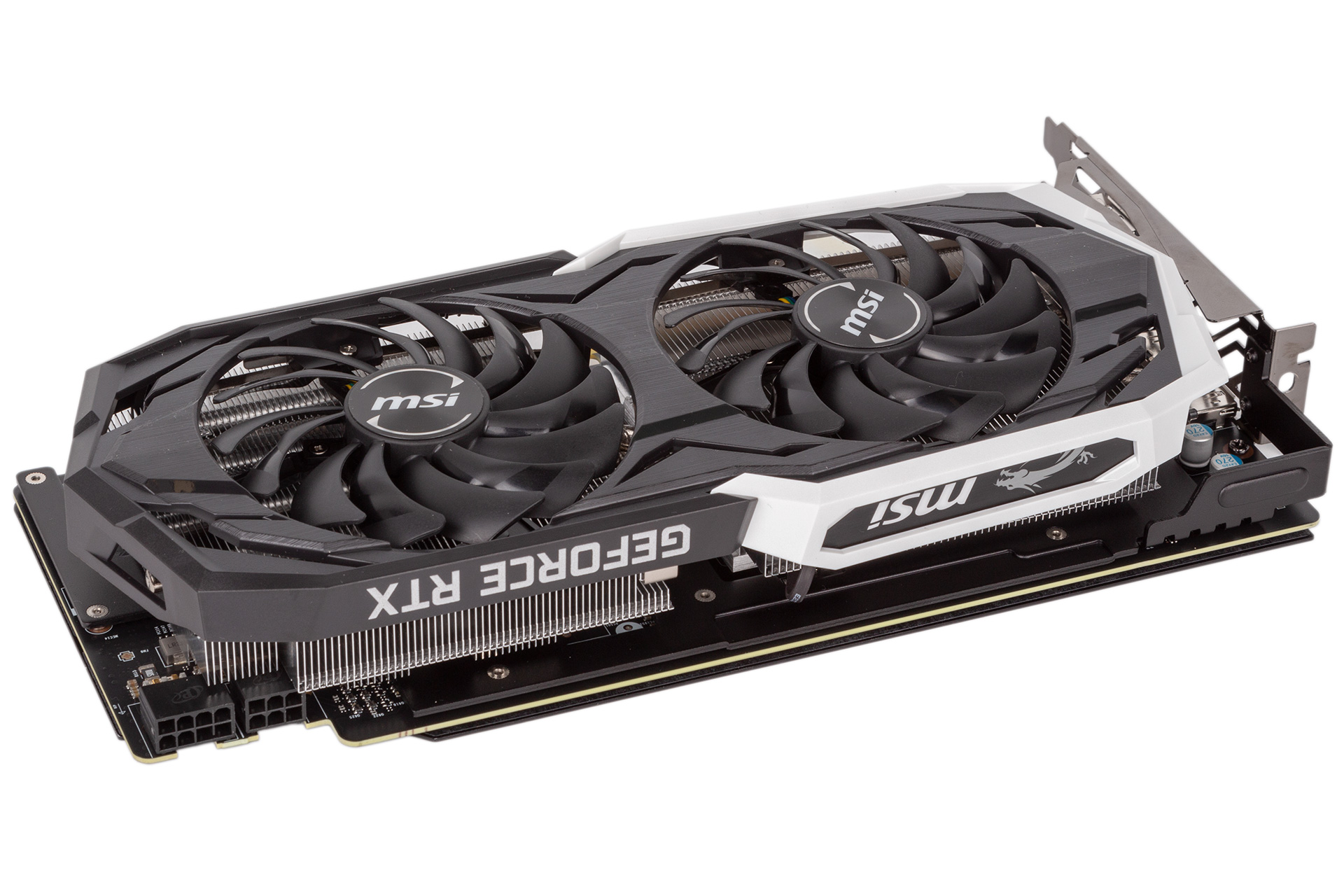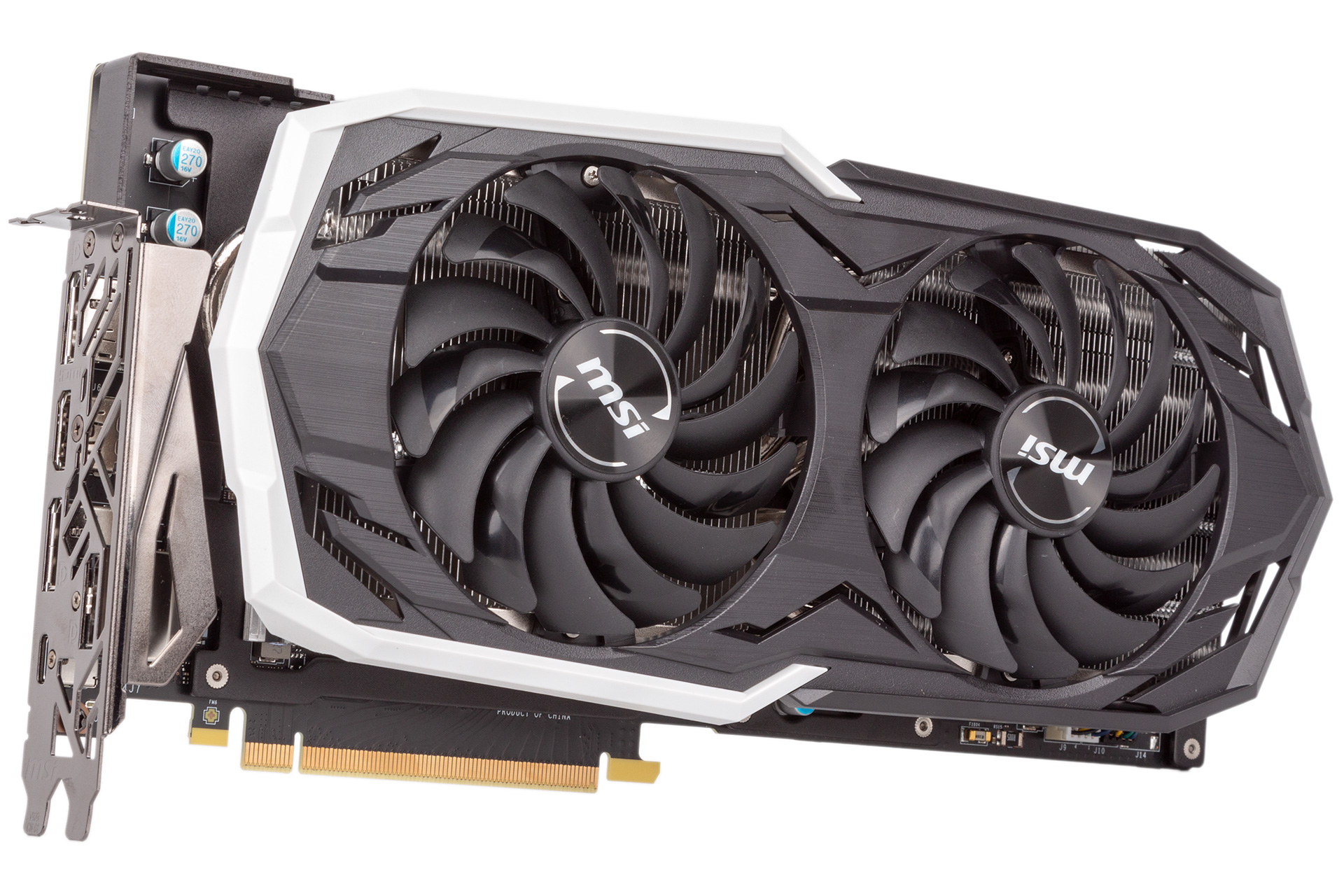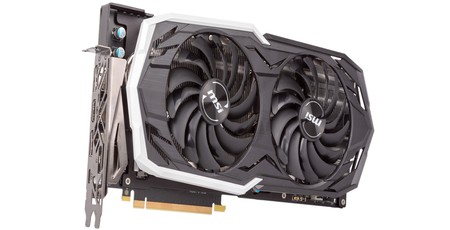Performance Analysis
Since both this card and the Palit RTX 2070 Dual are stock-clocked RTX 2070s, it’s unsurprising to see such similarities between them in nearly every test, and there is no relevant difference in games between them. Performance in VRMark is oddly lower with the newer drivers here, and Warhammer II remains buggy, but otherwise there’s little to get into.
As such, MSI’s card fits into the market just the same. The RTX 2080 is comfortably ahead in both price and performance, though RTX 2070 is better value. In terms of older cards, GTX 1080 stock is now thinning out, but Vega 64 is still about in a select number of SKUs. This card is a little under 10 percent quicker than both of these too.
Games supporting Deep Learning Super Sampling and real-time ray tracing, which leverage the RTX-exclusive Tensor Cores and RT Cores respectively, are still extremely low in number, so our testing of these techniques is still preliminary in both cases. We found DLSS to be very promising, but that was a Nvidia-supplied demo. Ray tracing, meanwhile, comes at a hefty performance penalty in Battlefield V, but we haven’t tested anything since the latest drivers and game updates came out, so the story there continues to unfold, and it’s still too early to say either way whether these add significant extra value to the RTX 2070.

Power consumption figures are right in line with Palit as well, and an overall system load result of 279W is excellent. Again, this is RX 580 levels of power consumption despite a drastic difference in performance.
Thermal performance is also identical to Palit in that it is very good – a load delta T of 39°C is excellent. Throughout testing, power was consistently listed as the performance cap in GPU-Z, so thermals aren’t limiting performance. We saw boosting to around 1,770MHz on average, which is ever so slightly faster than Palit’s card. It’s also considerably quieter, with the large fans never going past 1,200 RPM. The MSI card is certainly the bigger card, but it seems to put its size to good use in reducing noise output.
Overclocked, our card’s core clock was now hovering around the 1,950MHz mark, which is a 10 percent boost over stock. Coupled with a 10 percent memory overclock, we observed performance boosts of between nine and 12 percent on average – factors like CPU limits and API will play a role here, but generally we’re seeing more overclocking potential on the RTX 2070 than other RTX cards, with enough headroom to match or even beat GTX 1080 Ti OC cards. Power consumption does go up but not too drastically, which means fan speeds and temperatures are kept in check too.
Conclusion
With a £500 GPU budget, the RTX 2070 is fast becoming the only realistic choice. We’ve seen GTX 1080s on sale for £515, but prices for this part can vary wildly, and stock seems to be on the decline. The Vega 64, meanwhile, isn’t a bad alternative if you can find it close to £400, but it is slower and more power-hungry, which means similarly sized cards will run hotter and louder.
Overall, the RTX 2070 Armor comes off pretty favourably then, even if part of that is down to a lack of direct competition. We’ve foregone 4K benchmarks here on account of knowing from previous reviews that it isn’t quite up to the task in all games, but at 1440p it’s a real monster. While DLSS and real-time ray tracing are only just finding their way into games, and while the precise benefits of these technologies remains to be seen until after additional testing, the RTX 2070 is primed and ready to to take advantage and is the cheapest card to be so.

More specifically to this card, we think MSI has a very strong offering for under £500. Features aren’t as extensive as they are on its own premium models, but often that just comes down to RGB lighting and things like additional power phases that make little practical difference. We’ve also observed a similar level of overclockability between binned and non-binned GPUs, although we can’t guarantee that that’s a more general pattern. This card still comes with an excellent cooler, a backplate, a smidgen of RGB lighting, and semi-passive fans, so the key things we look for are present and correct.
As GTX 1080 and GTX 1080 Ti stock levels dwindle, the RTX 2070 is fast becoming the de facto choice for a premium GPU – though second-hand markets may still have some great deals. While RTX 2070 may be entry-level as far as RTX is concerned, it's premium for everyone else, and the ultra-premium RTX 2080 and RTX 2080 Ti are reserved for a select few and offer far poorer value. This particular SKU doesn’t seem to suffer in any way from using a non-binned GPU, and it also keeps costs relatively low compared to the menacing Founders Edition, runs cool and quiet, looks decent, and has a solid feature set. In short, if you have £500 to spend on a new GPU, spend it here.


MSI MPG Velox 100R Chassis Review
October 14 2021 | 15:04









Want to comment? Please log in.